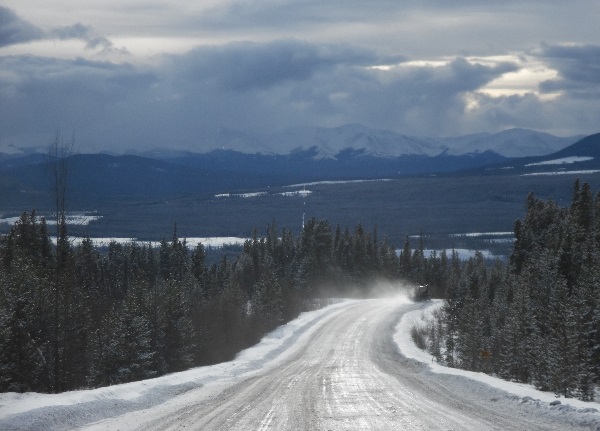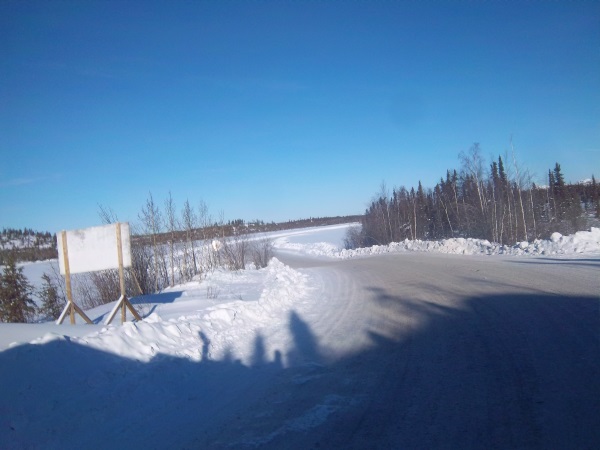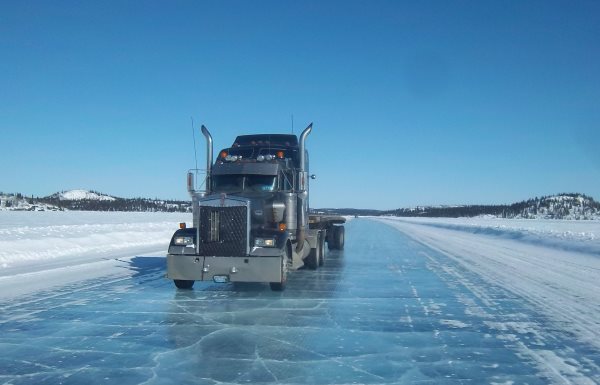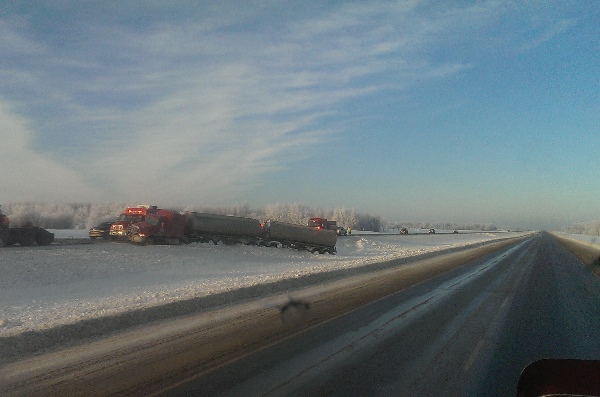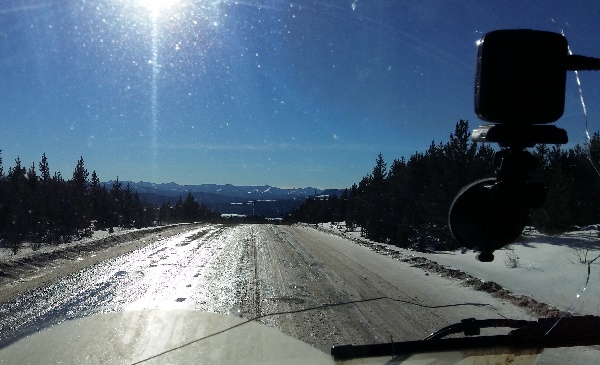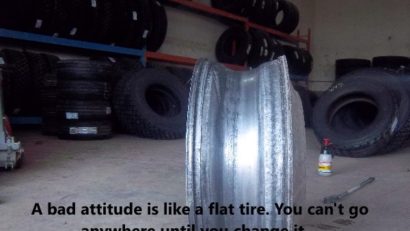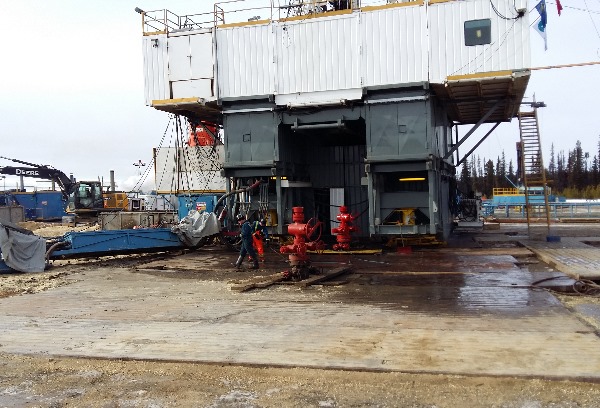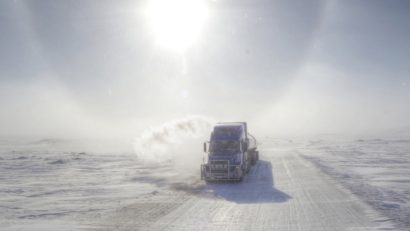What you don’t know, will bite you in the….
Oilfield driving can humble the best and most experienced highway drivers and I’ve seen situations like this following video so many times. Drivers with 30 or more years of accident free driving and new to the oilfields having their first accident ever.
Here’s a true story of complacency and why you chain up for what you don’t know. One night I was driving to a location down a familiar road with another driver. We came to a moderately sized coulee crossing a river. I stopped at the chain up area to put on my chains. He told me ” I’m not going to bother, I make this hill every time”. I agreed it’s possible to do it, but explained that I didn’t take chances so I was going to chain up
I finished chaining up, got back in the truck, and heard him calling on the VHF radio saying he was in the ditch. I asked if there was room to get around so I could go up to the other side of the hill and walk back down from there. I was too far away from where I was to offer any help. I drove past him to stop at the top of the hill and walked back down. He was OK, but his trailer was well in the ditch. So what happened to “I make this hill every time”?
Before he started through the coulee, he said he called on his VHF radio making sure the hill was clear. This is normal when you want to run at a hill with everything you have. He said there was no response which indicated it was clear.
He crested the first hill going down and saw another driver spun out on the hill going up the other side, but it was too late. (I guess the other driver didn’t think he needed chains either.) He slowed down barely making it around the other driver who was half sideways on the hill. His run at the hill was sacrificed, his momentum was lost, and having no chains ended his chance of making it up the hill. He ended up in a worse position than the first truck.
Here’s the problem that he wasn’t aware of.
The other driver was out of his truck chaining up and wasn’t able to let anyone know it wasn’t clear. You can sometimes count on others using the road to point out hazards like this, but what if it’s not busy and there’s nobody around?
I’m going to say this again.
Don’t chain up for what you know, chain up for what you don’t know.
Don’t ever forget this.
This happens every day in oilfield driving and guess who gets the blame? The person on the hill chaining up, but the person too lazy to chain up is just as responsible. Remember the first time you do something like this it’s a mistake. Every other time after it’s a choice.
It’s a small world when you’re working in the bush and if the consultant for the oil company you’re working for finds out what happened, so will your company.
Remember CYA from another section we covered?
Cover your ass. I told you that you’d hear this a lot working in the oilfields. If you have chains on and something happens, you’ll have people covering your back. If you don’t, you’re on your own. (This could even mean the tow bill.)
When anything happens on route to an oil lease, the first thing the Consultant for the oil company will ask is,
“Are they OK?” If the answer is yes, the next question is “Were they chained up?”
If they weren’t chained up, the oil company won’t cover the tow bill.
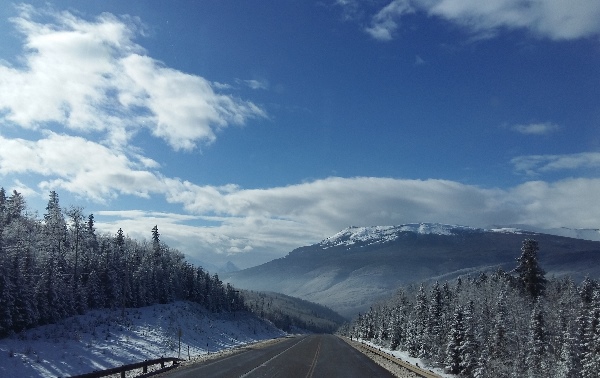
Oilfield Driving in Alberta offers a variety of terrain. Grande Cache Alberta is 2 hours south of Grande Prairie and can serve up some challenging hills once you leave the pavement.
How steep of a grade can you expect?
A typical steep grade on a main highway is about 5% to 8%, but rarely more than that. Grades on secondary highways in the mountains can be 10% or more. Climbing a steep hill with loaded b-trains for 30 minutes can be challenging in the winter. Oilfield driving in Northern Alberta and BC has some challenging bush roads with grades over 25%.
If you think drivers from ice road truckers had their challenges, wait until you do some off road oilfield driving. Northern Alberta along the mountains and Northern BC can dish up some of the most challenging terrain you’ll find in North America.
You’ll need some advanced shifting skills unless you’re in an automatic. Steep grades may require you to take 2 or 3 gears at once. If you can’t quite master shifting this work may not be for you. there is no margin of error as a missed shift could cost you dearly. I’d suggest working in a prairie region or find a company that has as automatic trucks in their fleet, but 18 speed transmissions are still very popular in the Oilfields.
On the lighter side, do a google search on some of the deadliest roads in the world or click on the link below. The “Death Road” in Bolivia is one of these roads that will make you feel pretty safe and secure on our roads.
Expect to use truck tires chains frequently as you’ll be off road a lot. Chaining up multiple times a day, or even multiple times on the same road can happen. (On off, on off, etc…) Chaining up will be a standard part of your routine just like strapping a load, or checking your equipment. You might not enjoy it with frozen hands at -40, but you won’t have a choice.
After doing this a lot, it’ll be second nature to you. When you’re good at chaining up, it could be done in just under 5 minutes on a good day. (Chaining up 1 axle on both sides with a set of triples). Keep in mind we all have good days and bad days. A bad day could take you 20 minutes or more dealing with tangled, kinked, frozen, muddy, or even damaged chains in need of quick repairs.
